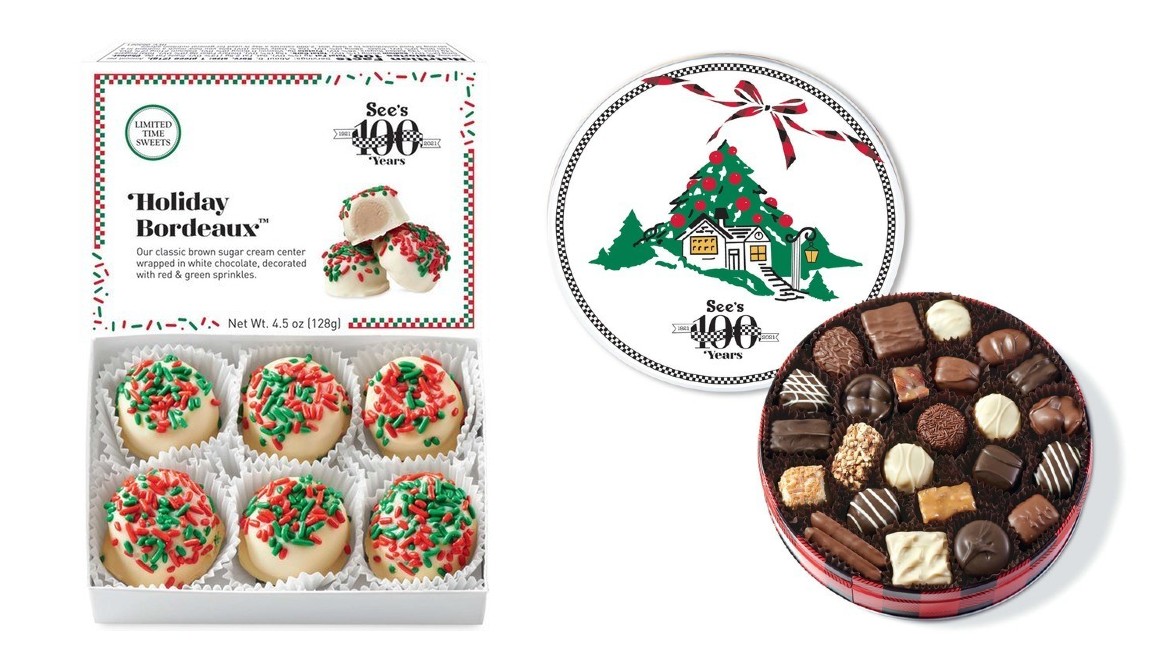Ever wondered if your favorite chocolate bar will taste the same in a few years? The chocolate industry is undergoing a remarkable transformation, driven by evolving consumer preferences and innovative market strategies.
The sweet landscape is shifting as consumer tastes become more sophisticated. In recent years, the chocolate industry has shown a remarkable ability to adapt to these changes, and understanding these tendencies is crucial for both industry insiders and chocolate aficionados. From the dominance of dark chocolate to the increasing importance of seasonal sales, the dynamics are complex and intriguing.
The popularity of dark and expensive chocolates has risen significantly, particularly in the U.S. This trend reflects a growing interest in higher-quality ingredients, ethically sourced cocoa, and more intense flavor profiles. Consumers are increasingly willing to pay a premium for chocolate that offers a unique and indulgent experience.
- Yoni Netanyahu Marriage Harvard Entebbe Heroism The Untold Story
- Michael Smerconish Marriage Cnn Bio Facts You Need To Know
American chocolate firms like Kraft Heinz, Mondelez, Hersheys, Mars, and General Mills are key players in this evolving market. These companies continuously adapt to changing consumer demands, whether through product innovation, marketing strategies, or supply chain adjustments. Understanding their strategies is crucial to grasping the broader trends in the industry.
| Attribute | Details |
|---|---|
| Industry | Confectionery (Chocolate Focus) |
| Market Size (US, 2024) | $83.54 billion (Confectionery), Chocolate Confectionery Dominates |
| Chocolate Market Share (US, 2024) | Approximately 47% of Confectionery Market Value |
| Growth Rate (US Chocolate Market) | CAGR of 5.27% from 2025 to 2030 |
| Projected Market Value (US, 2030) | $36.79 Billion |
| Key Market Drivers | Consumer preferences, premiumization, seasonal sales |
| Major Players (US) | Kraft Heinz, Mondelez, Hersheys, Mars, General Mills |
| Major Players (Global) | Chocoladefabriken Lindt & Sprngli AG, Ferrero International SA, Mars Incorporated, Mondelz International Inc., The Hershey Company, Lotte Corporation, Meiji Holdings Company Ltd, Nestl SA, Yldz Holding AS |
| Holiday Sales Influence | Significant Impact, especially Easter, Halloween, Christmas, Valentine's Day |
| Easter Chocolate Sales (US) | Approximately $2.1 Billion Annually |
| Easter Candy Production | Over 16 Billion Jelly Beans, 90 Million Chocolate Bunnies |
| Dominant Easter Candy | Reese's Peanut Butter Eggs |
| Reference | National Confectioners Association |
Consumer behavior is strongly influenced by tradition and celebration. Spotting their favorite brands and sweet treats, gifting confectionery, and buying for special occasions are among the leading reasons consumers shop for chocolate and candy. This ritualistic consumption underscores the emotional connection people have with these products.
The National Confectioners Association (NCA) offers valuable insights into consumer perceptions. As one NCA spokesperson noted, Still, people understand that confectionery products are treats. This perspective highlights the importance of moderation and the occasional indulgence in the consumption of chocolate and candy.
- Vivastreet Coventry Find Personals Ads More Updated
- Natalia Queen The Rising Star You Need To Know Bio More
A significant majority of consumers view confectionery as an acceptable pleasure. According to a recent report, 85% of consumers agree its fine to enjoy these treats. This widespread acceptance drives the industry's continued growth and innovation.
The candy industry closely monitors market performance through comprehensive rankings. The Candy Industry publishes an annual list of the top 100 global confectionery companies, ranking them by net sales. This list provides a benchmark for assessing the relative success of different companies and their impact on the global market.
Understanding the key players in the global chocolate market can guide purchasing decisions. Here's an extract from the Candy Industry list, showcasing the top ten global confectionery companies that manufacture chocolate, ranked by net confectionery sales value in 2020. (Note: Actual company names and rankings would be inserted here from the specific 2020 list).
The holiday season is a critical period for the chocolate industry. The holiday candy and chocolate market is a bustling industry that caters to millions of people worldwide. This period sees a surge in demand, driven by traditions of gifting, sharing, and personal indulgence.
Navigating the diverse landscape of holiday chocolate can be overwhelming. Whether youre a chocolate enthusiast or simply looking for the perfect gift, understanding the key players and their offerings can help you make informed decisions. The quality, variety, and marketing strategies of these companies all contribute to their success during this crucial time.
Global chocolate consumption spikes during the holiday season. Globally, the holiday sees significant chocolate consumption. This phenomenon underscores the cultural significance of chocolate as a symbol of celebration and goodwill.
Easter stands out as a major driver of chocolate sales in the U.S. In the United States alone, Easter chocolate sales reach about $2.1 billion annually, according to the National Retail Federation (NRF). This substantial figure illustrates the powerful impact of Easter on the chocolate market.
The production numbers for Easter confectionery are staggering. Over 16 billion jelly beans and 90 million chocolate bunnies are produced for the occasion, illustrating its deep connection to sugary indulgences. These numbers reflect the scale and reach of the Easter candy market.
Identifying the second-largest holiday for candy consumption reveals interesting trends. What is the second largest holiday for eating candy? This question highlights the relative importance of different holidays and their impact on the confectionery market.
Spending habits vary across different holidays. Americans spend an average of $2 billion on Halloween candy, $1.9 billion on Easter candy, $1.4 billion on Christmas candy, and $1 billion on Valentine's Day candy. These figures provide a glimpse into the seasonal patterns of consumer spending.
The future of chocolate lies in innovative seasonal offerings. The future of seasonal candy trends is projected to be a dominant element of the chocolate industry due to continuous innovations. Companies are constantly experimenting with new flavors, formats, and marketing strategies to capture consumer attention during specific holidays.
Reeses Peanut Butter Eggs dominate the Easter candy market. Nope, the festive first place prize goes to Reeses Peanut Butter Eggs. This product's consistent popularity speaks to its unique flavor combination and the enduring appeal of peanut butter and chocolate.
The combination of peanut butter and chocolate is a winning formula. The beloved combo of peanut butter and chocolate crushes the Easter competition. This enduring preference underscores the importance of understanding consumer tastes and preferences.
Easters performance in the seasonal candy arena is remarkable. In the seasonal candy playing field, Easter has been knocking it out of the park. This success highlights the strategic importance of Easter for chocolate manufacturers.
A breakdown of U.S. retail sales by holiday reveals the varying impact of each event. Here's a look at U.S. retail sales of chocolate, by holiday: Easter$935 million; Christmas$776 million; Valentine's Day$524 million; Halloween$383 million; Other holidays$12 million (February 16, 2018).
Christmas and Halloween also represent significant sales opportunities. In terms of performance, the Christmas season last year saw total retail sales of $5.6 billion across chocolate and candy categories in the U.S., followed closely by Halloween, earning $5 billion for the sector, with Easter producing $4.6 billion and Valentine's also gaining a strong share of the confectionery love, attaining $4.2 billion.
The U.S. chocolate market is poised for substantial growth. The U.S. chocolate market is expected to reach USD 28.45 billion in 2025 and grow at a CAGR of 5.27% to reach USD 36.79 billion by 2030. This projection signals a promising future for the industry.
Key players drive the innovation and growth of the market. Chocoladefabriken Lindt & Sprngli AG, Ferrero International SA, Mars Incorporated, Mondelz International Inc., and The Hershey Company are the major companies operating in the market. Their strategies and product offerings shape the industry's trajectory.
Market reports provide comprehensive analysis of the confectionery sector. Topics covered in the candy market report include distribution channels, product types, and regional variations. These reports offer valuable insights for stakeholders seeking to understand the market dynamics.
A thorough market report offers unbiased insights into trends and opportunities. The market report provides an unbiased and detailed analysis of the ongoing market trends, opportunities/high growth areas, and market drivers which would help the stakeholders to devise and align their market strategies according to the current and future conditions. This information is crucial for making informed business decisions.
The National Confectioners Association actively engages in public events. The National Confectioners Association issued the following statement on its participation in the 2025 White House Easter Egg Roll:
Partnerships with institutions enhance brand visibility and public perception. Were proud to partner with the White House on the 2025 Easter Egg Roll and provide guests with a curated selection of classic American treats made by chocolate and candy companies." This collaboration highlights the industrys commitment to tradition and quality.
Promotional campaigns drive seasonal sales. Get ready to spread some cheerorder your holiday pack today! These campaigns capitalize on the festive spirit to encourage consumer purchases.
Seasonal variations introduce novel flavors and product formats. Zachary Candy Corn Holiday brings this iconic candy into the Christmas season with red, green, and white kernels. These unique offerings cater to specific holiday themes and traditions.
Small-batch chocolate makers are gaining prominence. Two entrepreneurs ventured into the world of sustainable cocoa farming. The two learned about cocoa cultivation by visiting local farmers and cooperatives.
The creation of a new chocolate brand reflects a growing interest in artisanal products. Soon after, Boho Chocolate was born. This development underscores the increasing demand for unique and ethically sourced chocolate.
Boho Chocolate focuses on unique flavor profiles. Boho has a large number of small batch and single origin chocolate bars. This approach appeals to consumers seeking distinctive and high-quality chocolate experiences.
Holiday-themed products are a key offering for many chocolate companies. In terms of holiday candy, Boho has their Peppermint Crunch Bar, which is a mix of dark chocolate and crushed candy cane. These products combine familiar flavors with seasonal themes.
The history of established chocolate companies reveals evolving business strategies. The Wilbur side of the company split off and eventually faced its own challenges and transformations.
The Japanese chocolate market presents unique opportunities. The Japan chocolate market is expected to reach USD 5.73 billion in 2025 and grow at a CAGR of 2.56% to reach USD 6.50 billion by 2030. This market represents a significant opportunity for international chocolate companies.
Major players in the Japanese market include both domestic and international firms. Ltd, Lotte Corporation, Meiji Holdings Company Ltd, Nestl SA, and Yldz Holding AS are the major companies operating in the market. These companies adapt their products and strategies to suit the unique preferences of Japanese consumers.
The scale of Easter candy production is truly impressive. For reference, thats about 16 billion jelly beans and 90 million chocolate bunnies. These numbers underscore the enormous volume of candy produced for this holiday.
Easter's growing dominance in candy sales is a subject of debate. Going back to 2020, the consistent increase in Easter candy consumption led the Food Institute to question in an article if Easter is now the MVP of candy sales. This highlights the evolving dynamics of seasonal candy consumption.
The U.S. confectionery market is robust and diverse. The confectionery market in the U.S. is a diverse and expansive industry, valued at over $83.54 billion in 2024, with chocolate confectionery dominating the segment. This significant valuation underscores the importance of the confectionery industry to the American economy.
Chocolate holds a substantial share of the confectionery market. Chocolate accounts for nearly 47% of the market share by value, driven by high consumer demand for indulgent and premium options. This strong market share highlights the enduring appeal of chocolate to consumers.
- Russell Johnsons Wives Edith Cahoon Kay Cousins Story
- Andrew Benintendis Life Wife Parents More Latest Updates


